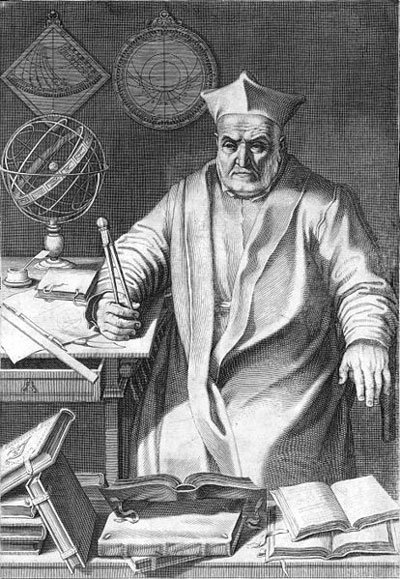
Earthly calendars have to work hard to stay in sync with the natural rhythms of Earth’s orbit around the sun.
Help EarthSky keep going! Please donate what you can to our annual crowd-funding campaign.
The last leap year was 2016, and the next one is 2020! Leap days are extra days added to the calendar to help synchronize it with Earth’s orbit around the sun and the actual passing of the seasons. Why do we need them? Blame Earth’s orbit around the sun, which takes approximately 365.25 days. It’s that .25 that creates the need for a leap year every four years.
During non-leap years, aka common years – like 2019 – the calendar doesn’t take into account the extra quarter of a day actually required by Earth to complete a single orbit around the sun. In essence, the calendar year, which is a human artifact, is faster than the actual solar year, or year as defined by our planet’s motion through space.
Over time and without correction, the calendar year would drift away from the solar year and the drift would add up quickly. For example, without correction the calendar year would be off by about one day after four years. It’d be off by about 25 days after 100 years. You can see that, if even more time were to pass without the leap year as a calendar correction, eventually February would be a summer month in the Northern Hemisphere.
During leap years, a leap day is added to the calendar to slow down and synchronize the calendar year with the seasons. Leap days were first added to the Julian Calendar in 46 B.C. by Julius Caesar at the advice of Sosigenes, an Alexandrian astronomer.

Celebrating the leap year? Take a moment to thank Christopher Clavius (1538-1612). This German mathematician and astronomer figured out how and where to place them in the Gregorian calendar. Image via Wikimedia Commons.
In 1582, Pope Gregory XIII revised the Julian calendar by creating the Gregorian calendar with the assistance of Christopher Clavius, a German mathematician and astronomer. The Gregorian calendar further stated that leap days should not be added in years ending in “00” unless that year is also divisible by 400. This additional correction was added to stabilize the calendar over a period of thousands of years and was necessary because solar years are actually slightly less than 365.25 days. In fact, a solar year occurs over a period of 365.2422 days.
Hence, according to the rules set forth in the Gregorian calendar leap years have occurred or will occur during the following years:
1600 1604 1608 1612 1616 1620 1624 1628 1632 1636 1640 1644 1648 1652 1656 1660 1664 1668 1672 1676 1680 1684 1688 1692 1696 1704 1708 1712 1716 1720 1724 1728 1732 1736 1740 1744 1748 1752 1756 1760 1764 1768 1772 1776 1780 1784 1788 1792 1796 1804 1808 1812 1816 1820 1824 1828 1832 1836 1840 1844 1848 1852 1856 1860 1864 1868 1872 1876 1880 1884 1888 1892 1896 1904 1908 1912 1916 1920 1924 1928 1932 1936 1940 1944 1948 1952 1956 1960 1964 1968 1972 1976 1980 1984 1988 1992 1996 2000 2004 2008 2012 2016 2020 2024 2028 2032 2036 2040 2044 2048 2052 2056 2060 2064 2068 2072 2076 2080 2084 2088 2092 2096 2104 2108 2112 2116 2120 2124 2128 2132 2136 2140 2144 2148 2152.
Notice that 2000 was a leap year because it is divisible by 400, but that 1900 was not a leap year.
Since 1582, the Gregorian calendar has been gradually adopted as a “civil” international standard for many countries around the world.
Bottom line: 2019 isn’t a leap year, because it isn’t evenly divisible by 4. The next leap day will be added to the calendar on February 29, 2020.
A fixed-date calendar and no time zones, researchers say
Should the leap second be abolished?
from EarthSky https://ift.tt/2GMQUo5

Earthly calendars have to work hard to stay in sync with the natural rhythms of Earth’s orbit around the sun.
Help EarthSky keep going! Please donate what you can to our annual crowd-funding campaign.
The last leap year was 2016, and the next one is 2020! Leap days are extra days added to the calendar to help synchronize it with Earth’s orbit around the sun and the actual passing of the seasons. Why do we need them? Blame Earth’s orbit around the sun, which takes approximately 365.25 days. It’s that .25 that creates the need for a leap year every four years.
During non-leap years, aka common years – like 2019 – the calendar doesn’t take into account the extra quarter of a day actually required by Earth to complete a single orbit around the sun. In essence, the calendar year, which is a human artifact, is faster than the actual solar year, or year as defined by our planet’s motion through space.
Over time and without correction, the calendar year would drift away from the solar year and the drift would add up quickly. For example, without correction the calendar year would be off by about one day after four years. It’d be off by about 25 days after 100 years. You can see that, if even more time were to pass without the leap year as a calendar correction, eventually February would be a summer month in the Northern Hemisphere.
During leap years, a leap day is added to the calendar to slow down and synchronize the calendar year with the seasons. Leap days were first added to the Julian Calendar in 46 B.C. by Julius Caesar at the advice of Sosigenes, an Alexandrian astronomer.

Celebrating the leap year? Take a moment to thank Christopher Clavius (1538-1612). This German mathematician and astronomer figured out how and where to place them in the Gregorian calendar. Image via Wikimedia Commons.
In 1582, Pope Gregory XIII revised the Julian calendar by creating the Gregorian calendar with the assistance of Christopher Clavius, a German mathematician and astronomer. The Gregorian calendar further stated that leap days should not be added in years ending in “00” unless that year is also divisible by 400. This additional correction was added to stabilize the calendar over a period of thousands of years and was necessary because solar years are actually slightly less than 365.25 days. In fact, a solar year occurs over a period of 365.2422 days.
Hence, according to the rules set forth in the Gregorian calendar leap years have occurred or will occur during the following years:
1600 1604 1608 1612 1616 1620 1624 1628 1632 1636 1640 1644 1648 1652 1656 1660 1664 1668 1672 1676 1680 1684 1688 1692 1696 1704 1708 1712 1716 1720 1724 1728 1732 1736 1740 1744 1748 1752 1756 1760 1764 1768 1772 1776 1780 1784 1788 1792 1796 1804 1808 1812 1816 1820 1824 1828 1832 1836 1840 1844 1848 1852 1856 1860 1864 1868 1872 1876 1880 1884 1888 1892 1896 1904 1908 1912 1916 1920 1924 1928 1932 1936 1940 1944 1948 1952 1956 1960 1964 1968 1972 1976 1980 1984 1988 1992 1996 2000 2004 2008 2012 2016 2020 2024 2028 2032 2036 2040 2044 2048 2052 2056 2060 2064 2068 2072 2076 2080 2084 2088 2092 2096 2104 2108 2112 2116 2120 2124 2128 2132 2136 2140 2144 2148 2152.
Notice that 2000 was a leap year because it is divisible by 400, but that 1900 was not a leap year.
Since 1582, the Gregorian calendar has been gradually adopted as a “civil” international standard for many countries around the world.
Bottom line: 2019 isn’t a leap year, because it isn’t evenly divisible by 4. The next leap day will be added to the calendar on February 29, 2020.
A fixed-date calendar and no time zones, researchers say
Should the leap second be abolished?
from EarthSky https://ift.tt/2GMQUo5

Aucun commentaire:
Enregistrer un commentaire